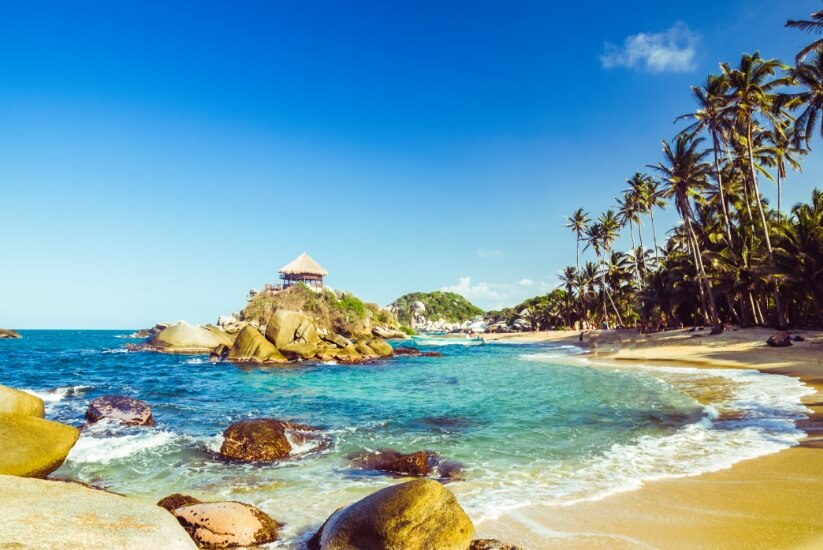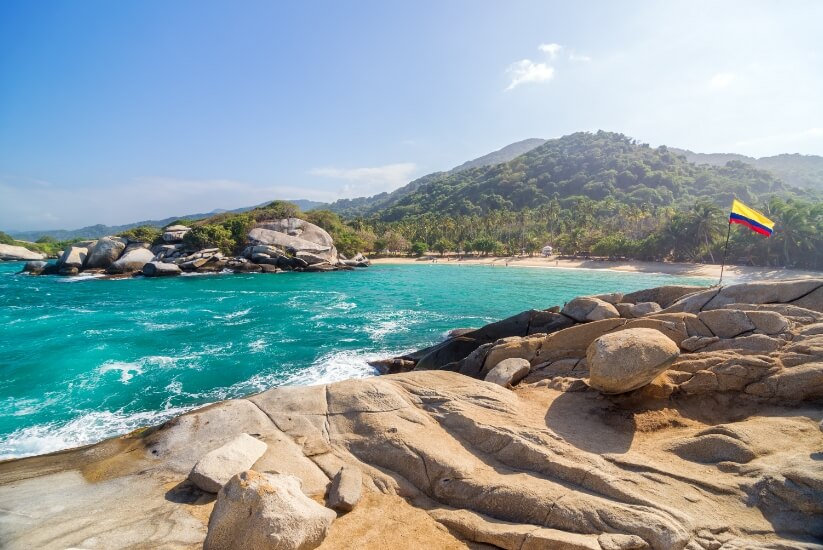
Crystal-clear blue and green waters, unique ecology and biodiversity, and a lodging option that allows direct contact with nature are some of the features that make Tayrona National Park the ideal destination for nature and adventure lovers.
Lonely Planet Publications chose this lovely nature reserve as one of the ten destinations to visit in 2010. It is located between the Atlantic Ocean and the Sierra Nevada de Santa Marta and consists of 15,000 colorful hectares, 3,000 of which are marine. Thousands of colorful animal and vegetable species, distributed from sea level to 5,775 meters, inhabit the reserve .
The park has over 108 species of mammals, among which howling monkeys, ocelots, corn monkeys, deer and over 70 species of bats stand out. Bird species, including the white and lone eagles, number over 300. Close to 110 coral, 471 crustacean and 700 mollusk species live in its oceans.
The Tayrona Indigenous people were deeply aware of the environment. They channeled mountain water to their houses in an organized way and designed cities and cultivation terraces with the aim of protecting nature always in mind. Visitors to the park have access to the ruins and can attest to their creative abilities.

The ecohabs at the Cañaveral and Arrecifes sectors are another big attraction. They are luxury accommodations in cabin-like constructions based on the architecture of the Kogui Indigenous people. They have a circular floor plan, wooden structures, and thatched roofs. Here, tourists can rest, enjoy amazing sunsets, and be lulled to sleep by the sound of the waves breaking against the beach.
The cape of San Juan de Guía, just ninety minutes by foot from the entrance to the park, is a setting for explosion and contradiction: the force of the sea and the exciting tropical jungle crash against each other to create an environment of lust and splendor. A pre-Columbian stone path, surrounded by lush vegetation, joins this unique place with Chairama, another of the park’s attractions.
The lovely Concha and Neguanje beaches are the preferred sites by visitors for diving, walking, and enjoying nature
On the western side of this enchanted place is the Quebrada Valencia, a river that forms monumental waterfalls against an enormous stone wall on its way to the ocean. White, effervescent sprays and foams seem to organize a show for the delight of every tourist who visits the place.
How to get there:
There are two entrances:
- El Zaíno, which is the entrance to the Cañaveral sector, located 34 km from Santa Marta on the trunk road that goes to Riohacha.
- Palangana, the entrance to the Neguanje sector, located 10 km from Santa Marta (17 km from El Rodadero).
The cost of entry is $7,000 pesos.
Where to stay
The park offers good camping sites, as well as the now famous ecohabs (cabins for 4 to 6 people built in an architecture similar to that of the ancient Tayrona Indigenous dwellings), in the Arrecife and Cañaveral sectors.


















